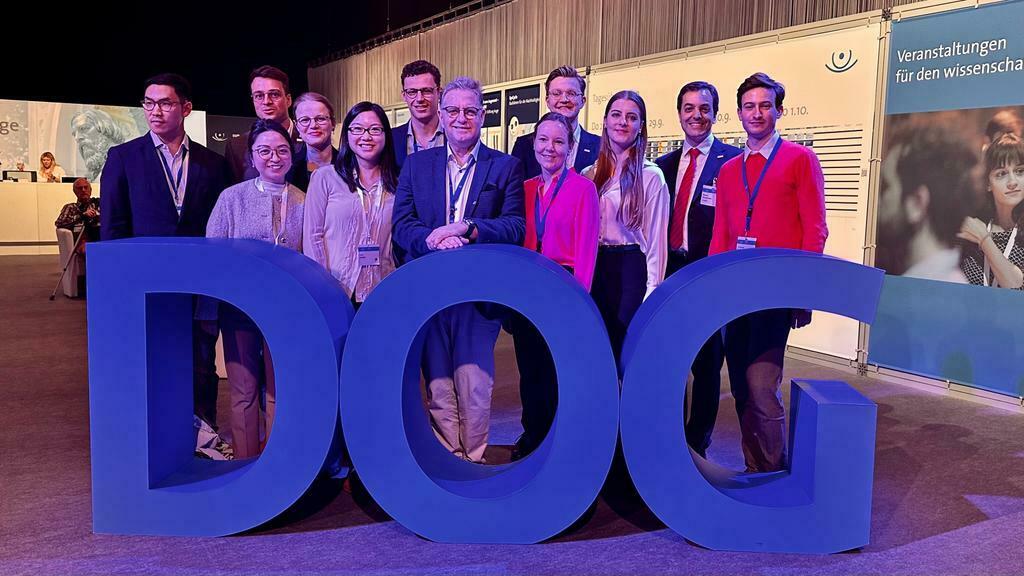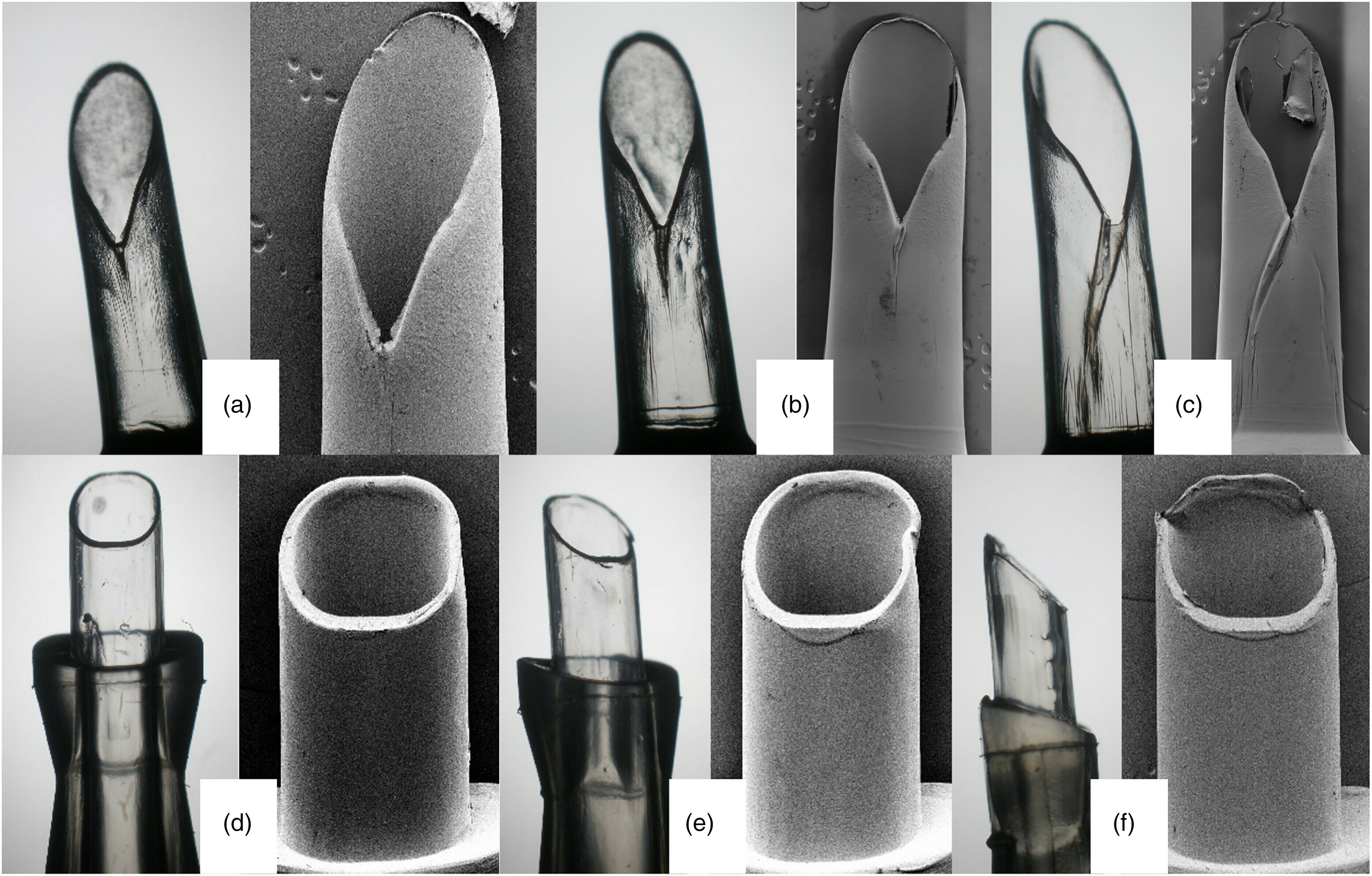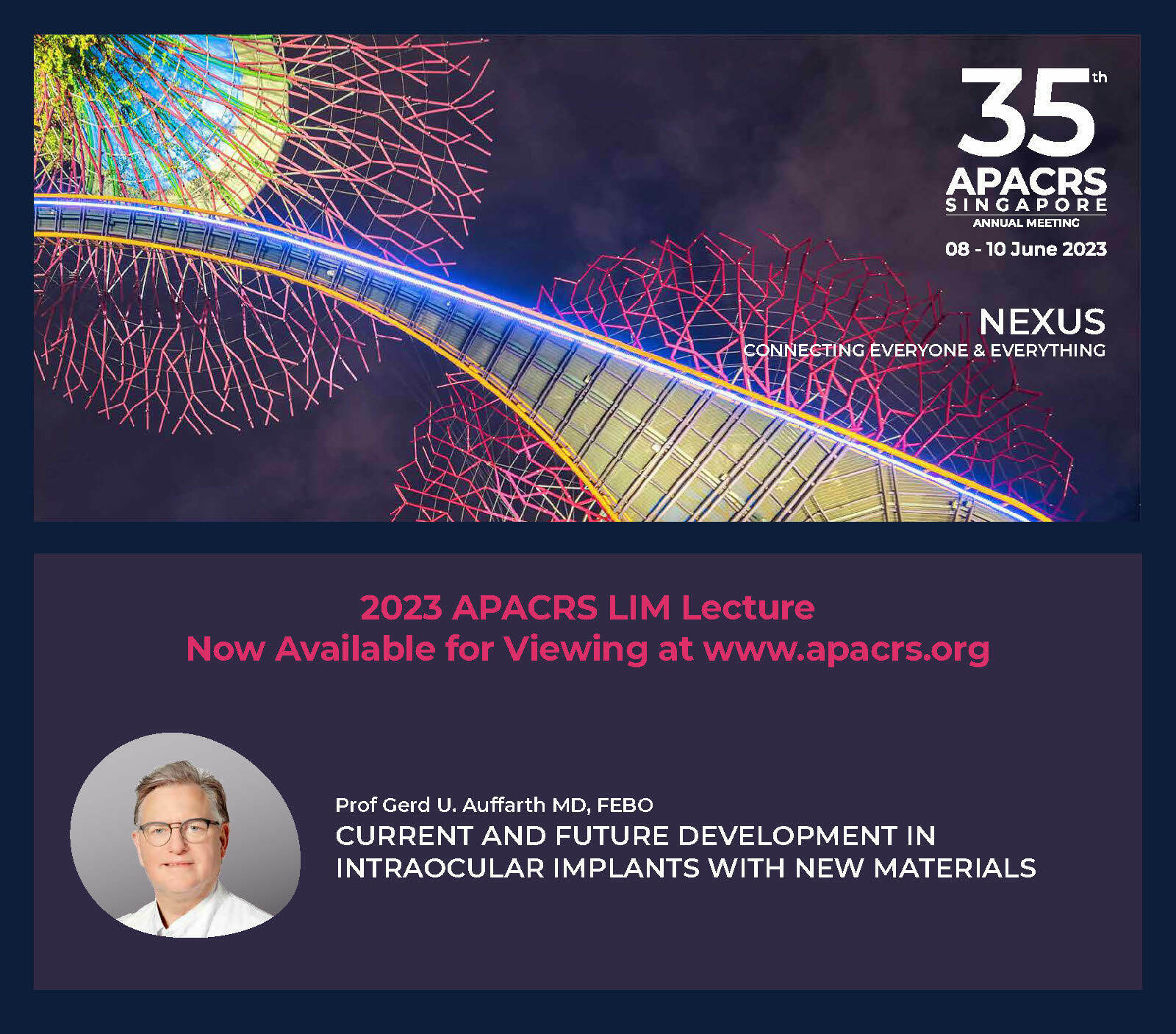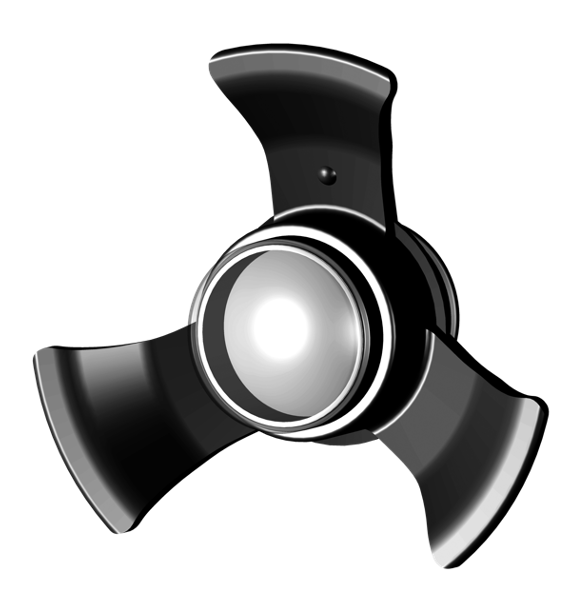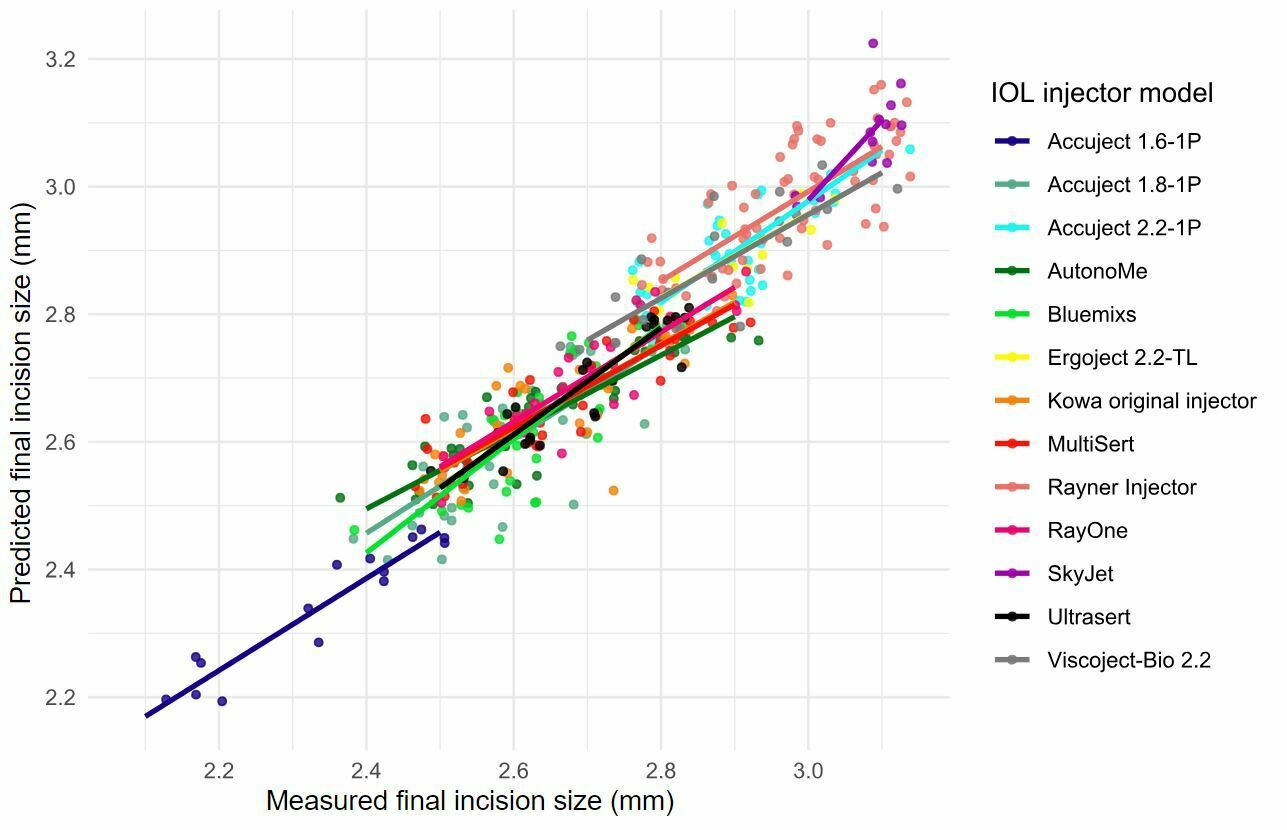New IOL material - xPIB
Heidelberg, 11 March 2024. It’s not every day that we get an intraocular lens (IOL) made of a new material!
Team VitreoSub is a winner!
In lab news, Dec 13, 2023Appeal for Nepal
Harold Ridley made the first intraocular lens (IOL) on 29th November 1949. In 1967, he set up a r...
In news, Nov 29, 2023Oil and Lenses don't mix
Heidelberg, 23 November 2023, we are very pleased to see in the latest American Journal of Ophtha...
In Silicone oIl study, Nov 26, 2023New IOL material - xPIB
Heidelberg, 11 March 2024. It’s not every day that we get an intraocular lens (IOL) made of a new material!
Read MoreAPACRS LIM Lecture
The lecture is named after Arthur Lim (1934-2014), the father of ophthalmology in Singapore. He was founding medical director of the Singapore National Eye Centre. He also helped establish the Singapore Eye Research Institute. Among his contributions are more than 20 books, including a comprehensive guide to eye diseases.
Read MoreWelcome
Professor Gerd Auffarth is the Professor of Ophthalmology at Heidelberg University. He worked with David Apple in the early 1990s at the Medical University of South Carolina. The lab is now housed in a thriving international laboratory for research work on intraocular devices that David initiated.
Read MoreAll Articles
New IOL material - xPIB
Heidelberg, 11 March 2024. It’s not every day that we get an intraocular lens (IOL) made of a new material!
In Lab research, Mar 11, 2024Team VitreoSub is a winner!
In lab news, Dec 13, 2023Appeal for Nepal
Harold Ridley made the first intraocular lens (IOL) on 29th November 1949. In 1967, he set up a registered charity, the **Ridley Eye Foundation (REF) which today funds cataract surgery in developing countries. The Foundation keeps a family connection – Harold Ridley's son Nicholas serves as its Chairman. In 2020, Nicholas and Alistair Wood, REF’s CEO, began an ambitious project to bring cataracts surgery to remote villages
In news, Nov 29, 2023Oil and Lenses don't mix
Heidelberg, 23 November 2023, we are very pleased to see in the latest American Journal of Ophthalmology our paper published on our experimental study examining straylight from oil dr...
In Silicone oIl study, Nov 26, 2023The safety of Reversible Trifocality.
The long-term axial alignment of capsular bag–fixated toric IOLs in polypseudophakic eyes was comparable to the results reported for monopseudophaks. The presence of the second lens in the sulcus did not appear to affect the rotational stability of the first IOL.
In clinical news, Oct 14, 2023DOG 2023 -Group Photo
The German Society of Ophthalmology unites over 8.000 ophthalmologists in hospitals, medical- and research-centers, including Heidleberg's David J Apple Center for Vision Research. The society's annual congress is held in Berlin every year.
In lab news, Sep 29, 2023Comparing Multisert and AutonoMe.
Two different IOL injector systems, the Multisert and the AutonoMe, were used. Implantation was without critical events in 96 of 96 eyes. Mean implantation time was 41.90 ± 7.11 s with the Mult isert and 52.22 + 12.06 s with Autono me.
In lab, news, Sep 26, 2023APACRS LIM Lecture
The lecture is named after Arthur Lim (1934-2014), the father of ophthalmology in Singapore. He was founding medical director of the Singapore National Eye Centre. He also helped establish the Singapore Eye Research Institute. Among his contributions are more than 20 books, including a comprehensive guide to eye diseases.
In lab news, Aug 12, 2023Overcoming implantation challenges with SING IMT
The SING IMT is an implantable telescope. With a haptic diameter of 10.8mm, an axial length of 4.4 mm and a weight of 63 mg in aqueous humor the implant is substantially bigger and heavier than conventional IOLs. With its increased size and weight the lens device significantly stretches the average-sized capsular bag.
In news, Aug 01, 2023Enlarged incisions – but why?
In cataract surgery small corneal incisions are associated with a significantly better visual recovery. What are initially small incisions can enlarge during surgery and that impedes the positive effects of keeping the incision small. Our goal was to identify the surgical factors that cause a larger final incision size. We can recommend that IOL-manufacturers should reduce the vertical diameter of the injector tip.
In lab news, Jun 29, 2023Featured
-
New IOL material - xPIB
In Lab research, -
Oil and Lenses don't mix
In Silicone oIl study, -
The safety of Reversible Trifocality.
In clinical news, -
DOG 2023 -Group Photo
In lab news, -
Comparing Multisert and AutonoMe.
In lab, news, -
APACRS LIM Lecture
In lab news, -
Overcoming implantation challenges with SING IMT
In news, -
Enlarged incisions – but why?
In lab news, -
DOC23 Success
In lab news, -
Introducing Dynamic Stimulation Aberrometry
In lab, news, , -
Two Apple cores
In news, history, -
We're Recruiting!
In lab, news, -
Merci beaucoup Philippe
In lab, news, -
Why Heidelberg?
In history, lab,




